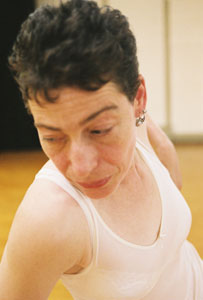Dance Magazine
July, 2006
Article by Nancy Wozny
Why do some dancers fully inhabit their bodies, creating a seamless whole between the dancer and the dance? Can we attribute this to a kind of somatic intelligence? Dancers have heard the term somatics tossed around for three decades, but few know the exact origins of the practice. And yet, dancers have been a driving force in the field. The somatic movement was already well under way when the philosopher Thomas Hanna coined the term in 1976. Somatics derives from the Greek word for the living body, soma, and is the study of the body experienced from within. The roots of somatics can be traced back to the late 19th-century European Gymnastik movement, which used breath, movement, and touch to direct awareness. Francois Delsarte, Emile Jaques-Dalcroze, and Bess Mensendieck encouraged a kind of inside-out expression that questioned the traditional nature of movement training. They seemed to be saying, “The body is the person,” thus joining mind and body in a celebration of the human form.
American somatic thinkers also made significant contributions. Mabel Elsworth Todd’s classic text, The Thinking Body, introduced dancers to the role of the mind in dance training in 1937. Her student, Lulu Sweigard (who later taught at Juilliard), developed “ideokinesis,” a process of activating the imagination to affect movement. Somatic pioneers Bonnie Bainbridge Cohen (Body-Mind Centering), Emily Conrad (Continuum), Joan Skinner (Skinner Releasing), Elaine Summers (Kinetic Awareness), Susan Klein (Klein Technique), and Judith Aston (Aston-Patterning), all hail from the dance world.

